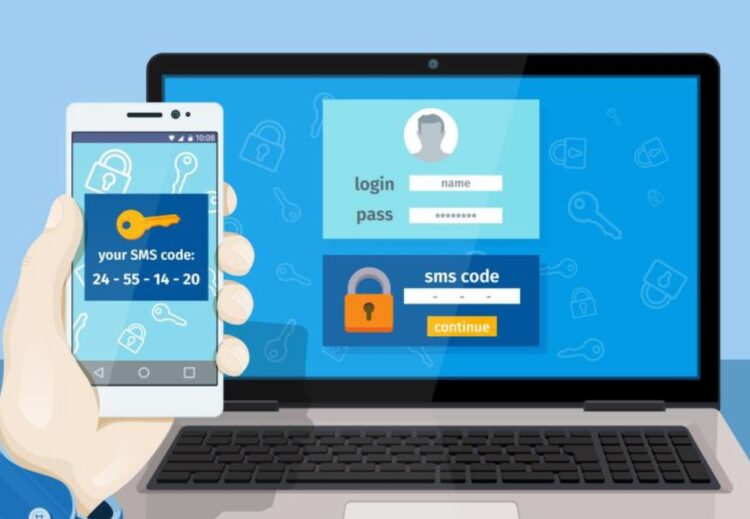
Companies that rely heavily on online payment systems are usually targeted by scammers and fraudsters from every corner of the internet. They fall victim to huge losses if fraudsters find loopholes and exploit them.
The main takeaway is to prevent fraud by building several methods to detect it on time. Here are five tips to help you do that and minimize your losses if you’re running an online business.
1. Ensure the right KYC compliances

The idea of preventing or detecting fraudulent behaviour if someone tries to apply or use the services your business provides is by gathering data. Most common services that online businesses require are an online application or registration where an applicant can verify their identity with some basic information.
This is where you must integrate the right KYC compliances (Know-your-Customer) when it comes to customer onboarding. When you ask too much information in the form of data fields, it might discourage some of them, whereas too little would give insufficient data to you to verify the applicant.
For example, you can only accept sign ups from people with registered company emails. This would ensure a certain degree of safety, however it would also limit the number of registers since most web users have a common email domain like gmail, yahoo or protonmail.
At the end of the day, it is up to you, how you want to limit access to your services and monitor your users. But be sure to make the right KYC compliances in order to limit fraudulent actions while trying not to deter potential customers.
2. Detecting affiliate marketing fraudsters

Affiliate marketing is perhaps the best way for online businesses, especially software companies to spread the word, build trust and generate links from others. However if you are not a software developer or engineer, like most people, you’ll have to resort to your next best option. And that is choosing an affiliate platform like Impact or CJ Affiliates.
You need to set strict guidelines on who promotes your products or services. If affiliates tend to be misleading, it will result in unhappy customers who will backfire with negative reviews. If affiliates tend to take their page visitors across the entire sales journey, you could also end up processing chargeback fees.
There is also an issue with promo abuse. If you offer sign up bonuses or various perks for affiliates, they will end up driving unwanted traffic but no potential buyers to claim their bonuses. They create fake landing pages that look like legitimate ones, despite their low domains scores, redirected page visitors to their iGaming or adult site.
What you need to do in this case is to make sure that you can accurately view the number of users your affiliates bring. The way to mitigate this is by ensuring that your system notes affiliate IDs so that you can see the conversion stages. High numbers of page visitors with nearly zero sales can be a sign of suspicious behavior.
3. ID Verification

Thanks to the growing popularity of face swaps and the mastery of photoshop, fake IDs are easier to make than ever. However the problem is not that fake ID fraudsters are getting smarter, meanwhile fraud prevention methods are becoming outdated.
To remedy this problem, online businesses should adapt to a new strategy of a full-scale profile review, not just what’s on an ID document. This should include the identification of social media presence, IP analysis or device fingerprinting. The main idea is to gather as much as possible to verify someone’s identity not just from their ID document.
For businesses that run their entire operations online, it is advisable to use a fraud management software to gather background information on certain identities and filter out certain candidates if an identity is suspicious.
4. Prevent account takeovers

To put it simply, an ATO or Account takeover is when a fraudster gets access to a legitimate account, like social media, email, WordPress, or an online banking account.
While there is no 100% guarantee to prevent all account takeovers or DDS attacks, there are several ways to make the fraudsters’ job incredibly difficult in accessing your device. There are four main ways to secure your account tighter than Fort Knox.
- 2FA (Two-Factor-Authentication) activation is one of the most common measures taken to protect your account with your phone. Most companies rely on services like DUO or Auth0.
- Phishing emails are a common way to lure unaware users to activate an embedded malware or granting unauthorized access.
- It is indispensable to use an SSL certificate for your website. Why? Sites usually collect sensitive information like credit card numbers or social security codes. An SSL site would enable encrypted communication between a web browser and a web server.
- If you are running a business it is also crucial to keep an eye on your employees. Keep track of what employees can and cannot access
5. Eliminate reverse chargebacks

If you are unfamiliar with the term, chargeback is simply a process where a payment gets returned to a buyer from the seller’s account. The downside of this is that it can be used by fraudsters to get chargebacks from businesses.
Chargebacks offer consumer protection, which is why they are so popular. Buyers are promised they will not be responsible if their accounts have fraudulent activity, and they might even be able to reverse charges when they are dissatisfied with a product or service.
But this is the same reason why fraudsters can prey on the generosity of chargebacks. So how can anyone prevent these sorts of actions?
Make sure that you use a secure sales platform and a reputable payment processor that should automatically have seller protection and fraud detection features in place, such as address verification services (AVS) and return abuse prevention tools.
Some examples of payment processors that offer seller protection features include Square and PayPal.
Conclusion
Running your own business on the internet opens many doors to meet new customers and engage with your audience. But in the process, it can attract a lot of unwanted attention, where certain fraudsters can seek out ways to harm your business.
In order to remedy the situation, every business owner should set up certain data entry points for their customers to weed out fraudsters. Setting up the right KYC (Know-your-customer) processes, you can build up different measures to gather data about your customers. By knowing who your customers are, you can detect and eliminate those with suspicious profiles or behaviour. If you want to have the right tools to prevent fraudulent activities, spot fake accounts or cut chargebacks, you can use Anura as a fraud solution and click here.
At the end of the day, the more you know about the people who visit your website, the better your chances to differentiate fraudulent behaviour from legitimate customers.







